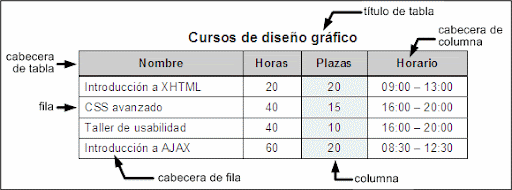Tabla de base de datos:
Para crear una tabla funcional en Angular, necesitas: Definir una interfaz o clase para representar los datos. Crear un servicio para obtener o manipular los datos. Usar directivas como *ngFor para mostrar los datos en una tabla. Ejemplo: Aquí, *ngFor itera sobre la lista de productos y | currency formatea el precio.
TypeScript
// Definición de la interfaz
interface Producto {
id: number;
nombre: string;
precio: number;
}
// Servicio para obtener datos (simulado)
export class ProductoService {
getProductos(): Producto[] {
// Lógica para obtener datos desde una API o localmente
return [{ id: 1, nombre: 'Producto A', precio: 100 }, /* ... */];
}
}
<!-- En el componente -->
<table>
<tr *ngFor="let producto of productos">
<td>{{ producto.id }}</td>
<td>{{ producto.nombre }}</td>
<td>{{ producto.precio | currency }}</td>
</tr>
</table>
Construcción de una Tabla de Base de Datos
Configurar el Servidor Backend (usando JSON Server): Instalar JSON Server:
npm install -g json-server Crear un archivo db.json:
{
"users": []
} Iniciar JSON Server:
json-server --watch db.json JSON Server estará disponible en http://localhost:3000.
Configurar el Componente para Mostrar Datos:
example.component.ts import { Component, OnInit } from '@angular/core';
import { HttpClient } from '@angular/common/http';
@Component({
selector: 'app-example',
templateUrl: './example.component.html'
})
export class ExampleComponent implements OnInit {
model = {
name: '',
email: ''
};
users = [];
constructor(private http: HttpClient) {}
ngOnInit() {
this.fetchUsers();
}
fetchUsers() {
this.http.get('http://localhost:3000/users')
.subscribe((data: any) => {
this.users = data;
});
}
onSubmit() {
this.http.post('http://localhost:3000/users', this.model)
.subscribe(() => {
this.fetchUsers();
});
}
} example.component.html:
<form (ngSubmit)="onSubmit()" #form="ngForm">
<label for="name">Name:</label>
<input type="text" id="name" required [(ngModel)]="model.name" name="name">
<label for="email">Email:</label>
<input type="email" id="email" required [(ngModel)]="model.email" name="email">
<button type="submit" [disabled]="!form.valid">Submit</button>
</form>
<table>
<thead>
<tr>
<th>Name</th>
<th>Email</th>
</tr> </thead>
<tbody>
<tr *ngFor="let user of users">
<td>{{ user.name }}</td>
<td>{{ user.email }}</td>
</tr>
</tbody>
</table>
...

